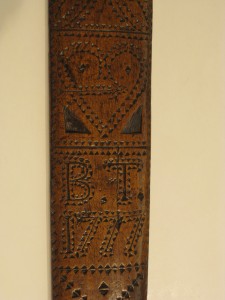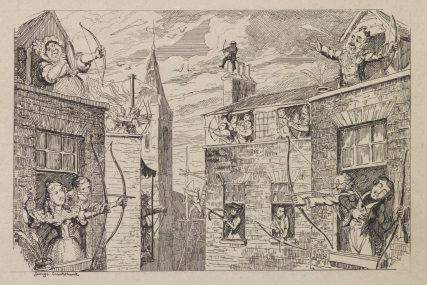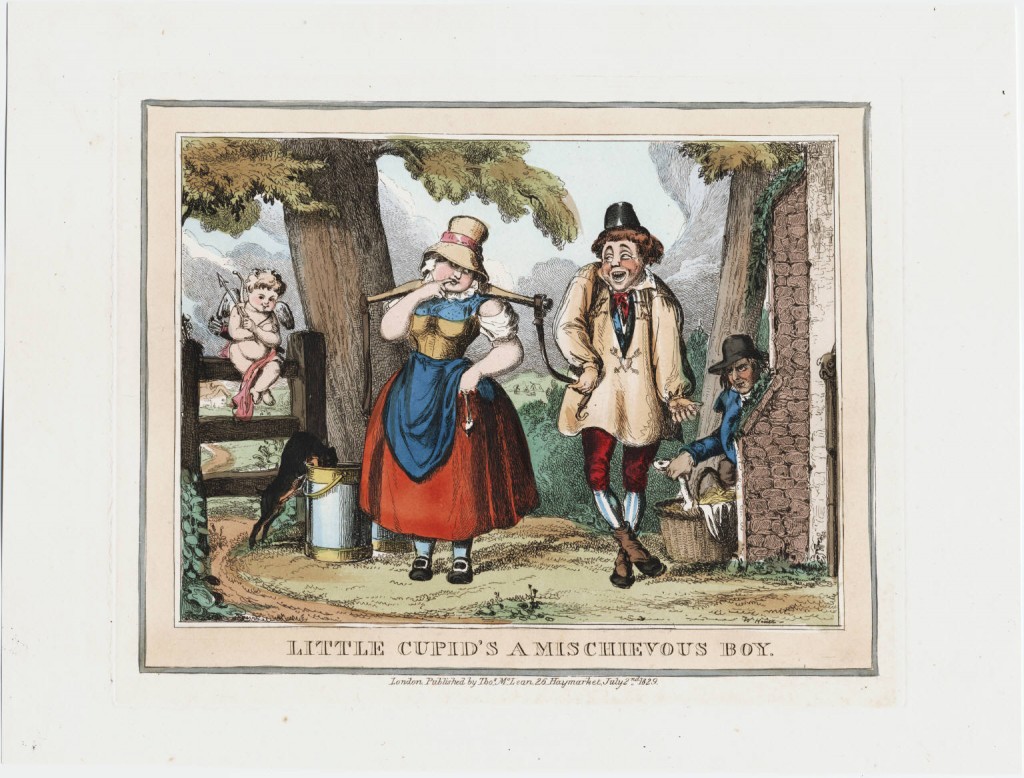Studying the language used to describe the making and breaking of marriages grants us a unique insight into the expression of emotions such as love, joy, sorrow and loss. In the eighteenth century, couples engaging in troubled courtships drew extensively upon the language of the heart, conceptualising their hearts in particular ways according to their changing romantic misfortunes. They used terms such as ‘heart’, ‘chest’ and ‘breast’ interchangeably in their letters, while ballads even placed a lover’s heart in the breast of another. However notions of the ‘afflicted’, ‘diseased’, ‘plagued’ and ‘broken’ heart each had subtly different meanings, and were used in a particular way to denote the various stages of romantic breakdown. This began when the heart was initially cut or pierced by love, which began to pull on their heartstrings when matters took a turn for the worse. This resulted in disease or damage to the heart, which finally broke or died within them. Notably absent in their discourse were descriptions of the heart suffering on the cross, or the Catholic imagery of the heart bleeding or on fire.
 The initial damage to a lover’s heart was caused by a metaphorical weapon such as an arrow or dagger which was said to cut or pierce it. The image of the heart pierced by love was frequently depicted on love tokens such as staybusks to symbolise the initial injury made by love, and the beginning of a lover’s commitment (see the image on the left, a Welsh treen staybusk love token from 1777). This mirrors Petrarch’s description of the first time he encountered Laura, dramatising ‘the bow and all the arrows that have pierced me, / the wounds that reach the bottom of my heart.’ Such injuries were frequently described by lovers writing letters to one another, with the Reverend Charles Powlett describing how the events of his troubled courtship with Anne Temple had ‘cut me to the Heart’ in 1790. This damage could be done deliberately, with Richard Law attempting to reassure the object of his affection Jane Townley in 1816 that his pleading to marry her should not ‘be construed to planting Daggers in your Breast.’
The initial damage to a lover’s heart was caused by a metaphorical weapon such as an arrow or dagger which was said to cut or pierce it. The image of the heart pierced by love was frequently depicted on love tokens such as staybusks to symbolise the initial injury made by love, and the beginning of a lover’s commitment (see the image on the left, a Welsh treen staybusk love token from 1777). This mirrors Petrarch’s description of the first time he encountered Laura, dramatising ‘the bow and all the arrows that have pierced me, / the wounds that reach the bottom of my heart.’ Such injuries were frequently described by lovers writing letters to one another, with the Reverend Charles Powlett describing how the events of his troubled courtship with Anne Temple had ‘cut me to the Heart’ in 1790. This damage could be done deliberately, with Richard Law attempting to reassure the object of his affection Jane Townley in 1816 that his pleading to marry her should not ‘be construed to planting Daggers in your Breast.’
The symbolism of the wounded heart was shaped by competing religious and classical discourses, centring on the spear which pierced the heart of Jesus and the arrows fired by Venus’s son Cupid, which inspired love in unsuspecting individuals. In the etching ‘Little Cupid’s a Mischievous Boy’ (1829, see below), Cupid sits on the fence holding an arrow ready to shoot at a milkmaid. She dangles her heart from a chain held in her hand, while her hapless suitor bears a heart shot through with two arrows on his shirt. This would have alerted those viewing the image that he had received the initial wound of love, while the heart she held in her hand remained vulnerable to attack.
The heart wounded by arrows was granted increasing prominence in the celebration of Valentine’s Day in the 1820s and 1830s, as demonstrated by Cruikshank’s etching of the month ‘February’ in 1837 (Fig. 3.) It depicts an enraptured suitor joyfully clutching the place where an arrow shot by his beloved has entered his heart. Above him, a man with open arms waits with eager anticipation for an arrow to strike him in the chest.

Once the initial wound had been made to a lover’s heart, they were particularly vulnerable to becoming diseased or afflicted by romantic strife. Writers may have been influenced by the language of ballads such as ‘Phillida Flouts Me’ (written c. 1600) which likened love to a fatal plague, wailing ‘Oh what a Plague is Love / I cannot bear it.’ Other poems in 1797 described soldier’s wives as ‘languid and sick at heart’ due to separation from their spouses. The chaplain’s daughter Anne Temple drew upon these discourses of sick or diseased hearts when describing her suitor Charles’s pain in 1794, writing after the death of his mother that ‘I would speak comfort and consolation to you, but alas! I know from too fatal experience that the heart in affliction like yours refuses it as vain and ill times.’ Richard Law also described his heart as ‘plagued’ by Jane Townley in November 1817, cruelly addressing her as ‘thou inveterate Plague of my heart.’
For lovers such as the tailor’s daughter Sarah Hurst, their failing courtships were enough to cause ‘my Heart strings to part.’ Such terminology was part of the legacy of ancient conceptions of anatomy, where the tendons or nerves were thought to brace and sustain the heart. As Abraham Taylor preached in his treatise of 1730, when ‘our heartstrings break, if we rely on Christ by faith, we may have abundant support.’ The heart’s ‘strings’ were thus seen to govern the workings of the heart as an organ, holding it together and ultimately breaking when it failed. Heart-strings described in poetry were seen to throb, suffer or burst due to the high passions of love; in As you like it, a poem, addressed to a friend (1785), the muse experienced ‘Her heartstrings throbbing’ while the protagonist of Quashiba’s Return (1791) described how ‘my heartstrings were rent into twain; / And my breast did with jealousy burn’ as Quashiba had wronged him.
The final stage of a lover’s sorrow was the breaking or death of the heart; as Sarah Hurst wrote in her diary during her separation from Major Henry Smith in 1759, ‘My Heart dies within me.’ Sarah may have been influenced by the book of Samuel in the Old Testament, where the foolish Nabal’s ‘heart died within him’ as he was avenged by God. The expression may also have arisen from ballads such as ‘Phillida Flouts Me’, where the hero described how love ‘so Torments my mind / that my heart faileth.’ Other ballads simply anticipated the possibility that the heart might break, with one figure who ‘thought that my Heart would been broken’, and another whose heart was ‘ready to break’, but not actually doing so. While the broken heart of the lover was irreparably damaged by suffering, the human heart broken by sin could be healed by God, with psalms promising that ‘The LORD is nigh unto them that are of a broken heart’ and Luke sent by God ‘To heale the broken harted.’
By describing their hearts as easily (and sometimes deliberately) damaged by others, courting couples crafted the heart as a vulnerable organ which could be irreparably damaged by love. Their hearts were variously cut, stabbed, pierced, wounded, torn apart, plagued and diseased, as the damaged heart was associated with physical injury to the body as well as providing a metaphor for their misfortune. This richly detailed language was influenced by a range of sources including ballads, poems, scripture, classical mythology and contemporary prints, providing lovers with a unique vocabulary with which to understand and express their anguished emotions.


Enjoyed this history of the broken/diseased heart. Thank you for posting.
I emphatically agree and really knowledgeable article. Heart plays a pivotal role in the mentioned regard.
Muhammad Naeem ul Fateh PhD
Pingback: Happy Birthday to Us! Top 10 Posts | The History of Emotions Blog